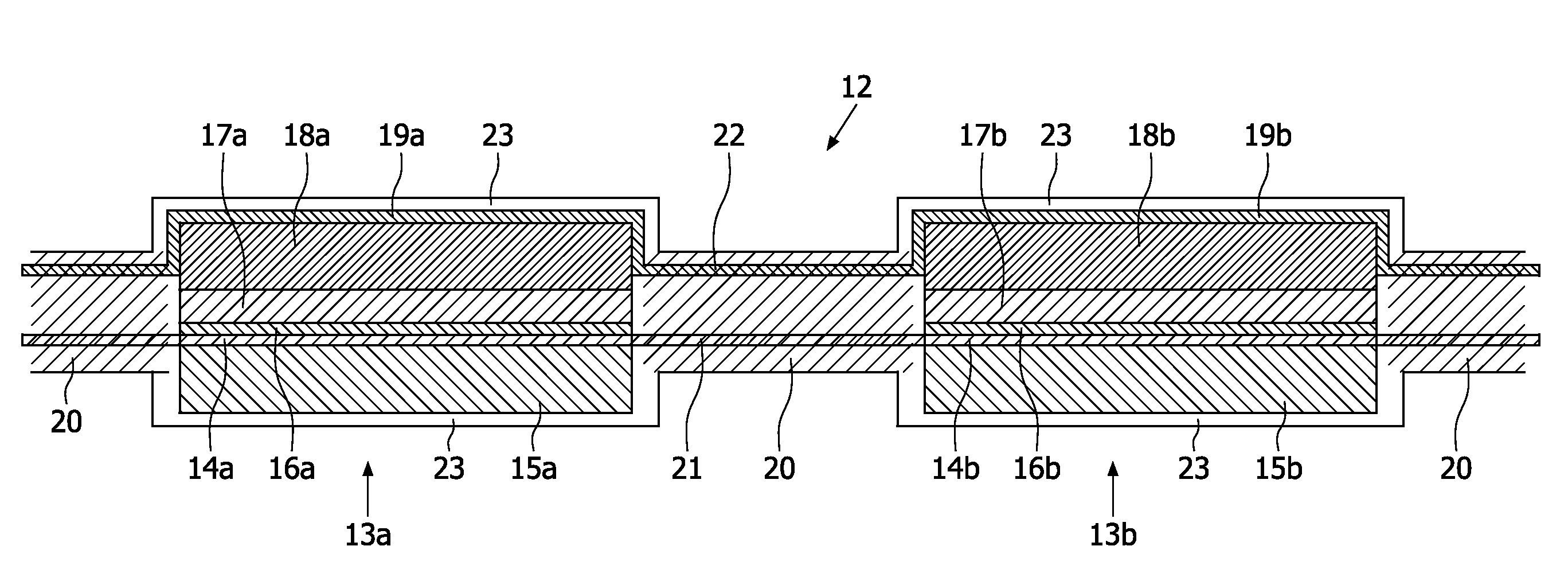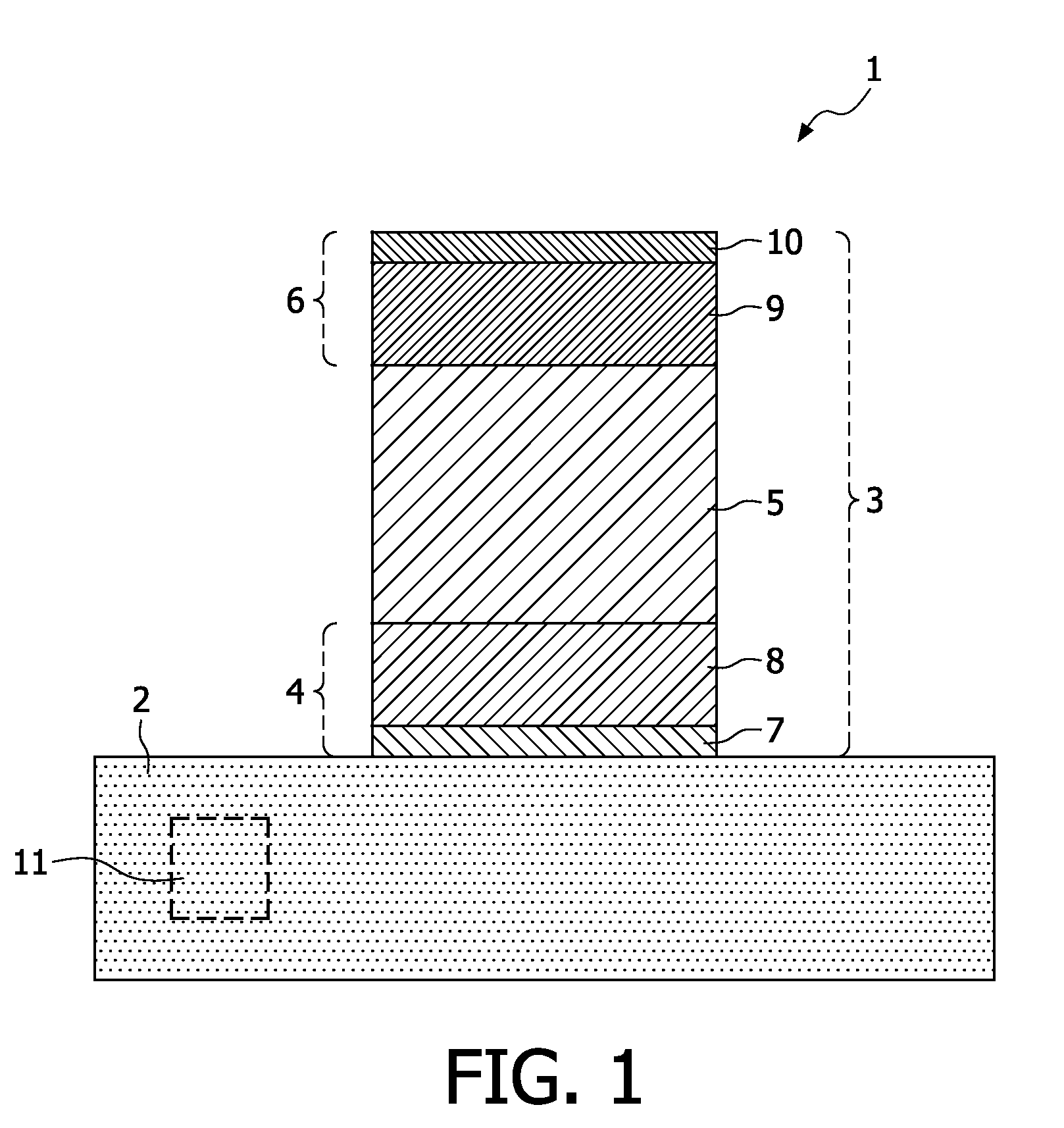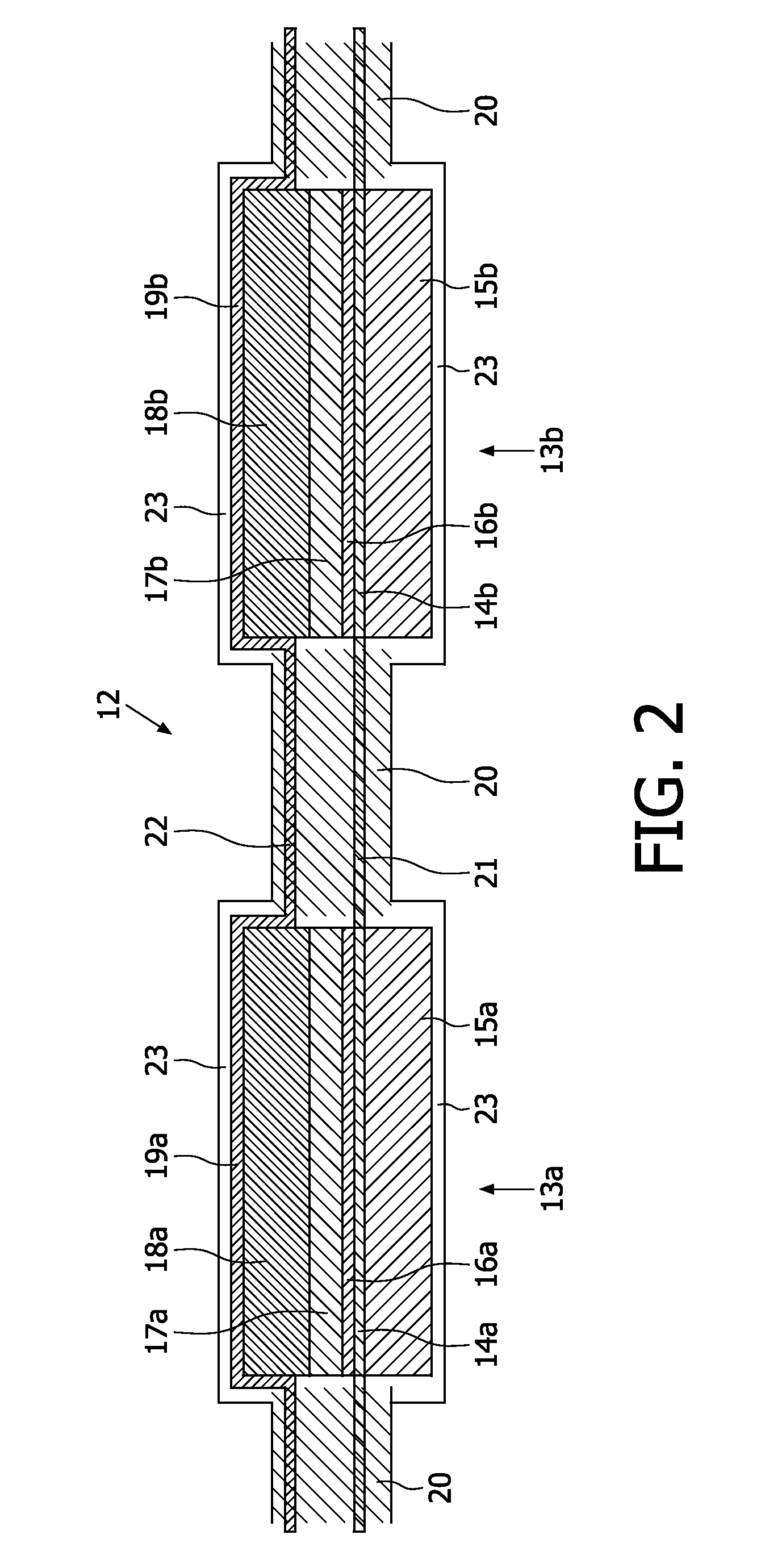Electrochemical energy source and electronic device provided with such an electrochemical energy source
a technology of electrochemical energy source and electrochemical energy source, which is applied in the manufacture of cell components, current conducting connections, and final products. it can solve the problem of limiting the applicability of known batteries by a large amount, and achieve the effect of sufficient flexibility of energy sources
- Summary
- Abstract
- Description
- Claims
- Application Information
AI Technical Summary
Benefits of technology
Problems solved by technology
Method used
Image
Examples
Embodiment Construction
[0018]FIG. 1 shows a schematic cross section of an electrochemical energy source 1 according to the prior art. The known electrochemical energy source 1 comprises a substrate 2 on top of which an electrochemical cell 3 is deposited. The cell 3 comprises a first electrode 4, an electrolyte 5, and a second electrode 6. In this example, the first electrode 4 consists of a first current collector 7, and an cathode 8 deposited on top the first current collector 7, while the second electrode 6 consists of a anode 9, and a second current collector 10 deposited on top of the cathode 9. In this example, the substrate 2 is made from silicon in which one or more electronic components 11 may be embedded, wherein the current collectors 7, 10 are commonly electrically connected to the electronic component(s) 11. Optionally, a reverse stack could be applied wherein the first electrode comprises an anode, and the second electrode comprises a cathode.
[0019]FIG. 2 shows a schematic cross section of a...
PUM
 Login to View More
Login to View More Abstract
Description
Claims
Application Information
 Login to View More
Login to View More - R&D
- Intellectual Property
- Life Sciences
- Materials
- Tech Scout
- Unparalleled Data Quality
- Higher Quality Content
- 60% Fewer Hallucinations
Browse by: Latest US Patents, China's latest patents, Technical Efficacy Thesaurus, Application Domain, Technology Topic, Popular Technical Reports.
© 2025 PatSnap. All rights reserved.Legal|Privacy policy|Modern Slavery Act Transparency Statement|Sitemap|About US| Contact US: help@patsnap.com



